You can propagate succulents in many ways. But today I am going to tell you about an unusual way of propagating succulents. It is “How to propagate succulents with honey”.
In the end of this article you will find it is an interesting way to propagate succulents with a bit of a twist.
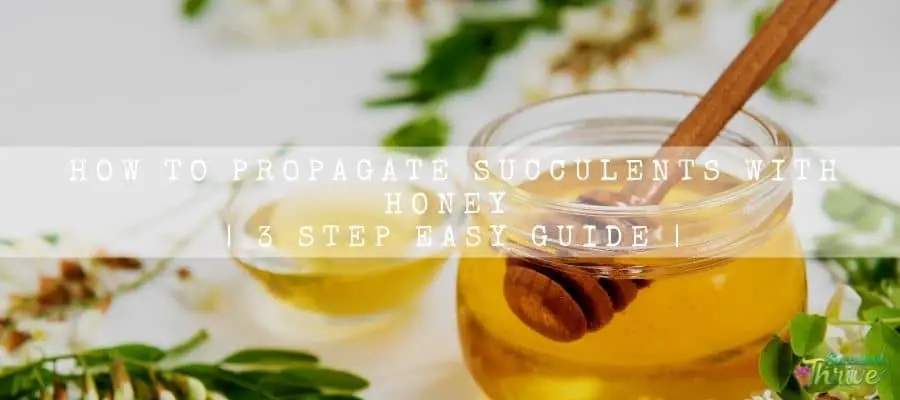
Can we propagate succulents with honey?
You can propagate succulents with honey. Honey is generally used as a medicinal substance.
However, you could use it as a rooting hormone for succulents too. There are anti-fungal materials and antiseptic materials included in honey.
They do not allow the bacteria and fungi to attack succulent plant leaves and stems which you will be using for propagation.
Furthermore, you may use honey to dip the succulent pieces, which will stimulate forming new leaves.
If you wish to use honey as a rooting aid, the best recommendation is to use pure honey instead of using products which are pasteurized. Those products do not consist of valuable materials which usually included in pure honey.
How honey works in propagation
Honey is an antiseptic and antifungal substance formed in a natural way. As such they could keep the bacteria and fungus at bay while allowing the rooting hormone in the plant to work properly.
If you use synthetic hormones for the rooting process, it will usually take about three to four days to start rooting.
On the other hand, if you use honey, it will take longer than that to form roots.in fact, it could be one week to two weeks to form roots.
Honey is a natural rooting hormone which you could easily find in all households, and it could be more productive and effective in the root formation process.
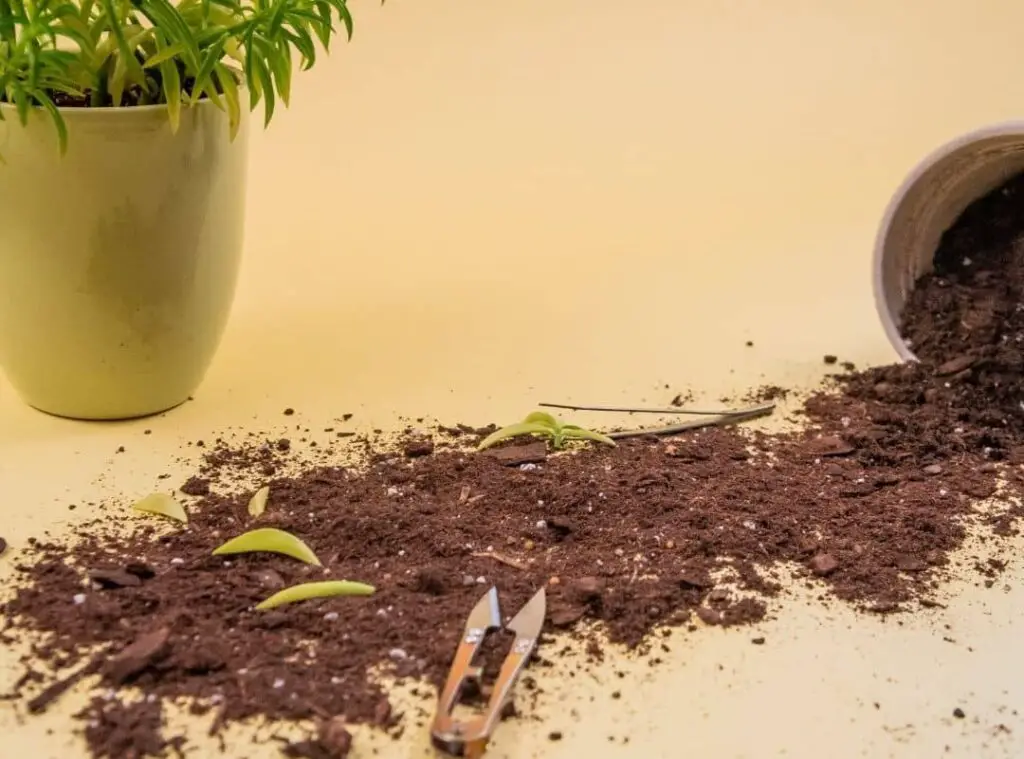
Three step guide to use honey in propagation
First step – Leaf cutting / Stem Cutting
First and foremost, you should start this process with taking some healthy leaves from the succulent. When you do that, you could ideally take them off at the bottom part of the plant.
When you remove the leaves of the plant, ensure that you do not uproot it. To do this easily, you could simply twist the leaves and they will come out easily.
While you do this, ensure that you do not break the leaf and make sure that there is not any remaining part of the leaf on the stem.
Alternatively, if you are using a stem cutting for this purpose, you need to use equipment which is clean and which has proper hygiene.
Best is to use a clean scissor knife to do this. you could trim the piece ideally which is located slightly near the leaf node.
It would be nice and healthy for the plant, if you could take an additional stem or even a new shoot of the plant for this purpose.
Second Step – Drying out the leaf cutting or the stem cutting
I would recommend placing the cuttings somewhere to let them become dry.
Unless, if you place those cuttings directly in the soil, those edges would be still fresh and there is a high potential of occurring root rots in the cuttings.
As such, it is vital that first you let the cutting dry out. To do this you may place these in an open place where it exposes to adequate sunlight to wither.
Ideally you need to wait for 3-4 weeks so that those cuttings will become callus. Once the callus forms, it will avoid any potential infection due to bacteria and due to fungus, which will lead to rot.
In the meantime, when the roots are callusing, you could arrange a potting mix whilst adding succulent soil mix.
Third step – How to use honey in this process.
Here comes the point where you could use honey in this process. You need to take out callused stem cuttings and the leaf cuttings and then dip them in honey.
That will create a light layer of honey on the rooting’s. After that you could lay them on the soil surface which you have added in a pot or even in a tray.
You could simply just place them on the soil surface. You could practice a small trick here. You can do a light misting once every third day.
Refrain in watering them directly as this is not the time to do it. Whenever you spot the soil is in dry condition, you could simply start misting them.
After a few weeks’ time, you could spot how small roots come out from them given all its essential care treatment.
It could be sometimes less than a few weeks or may be more than that for root formation as it could vary depending on the weather conditions and on the succulent type as well.
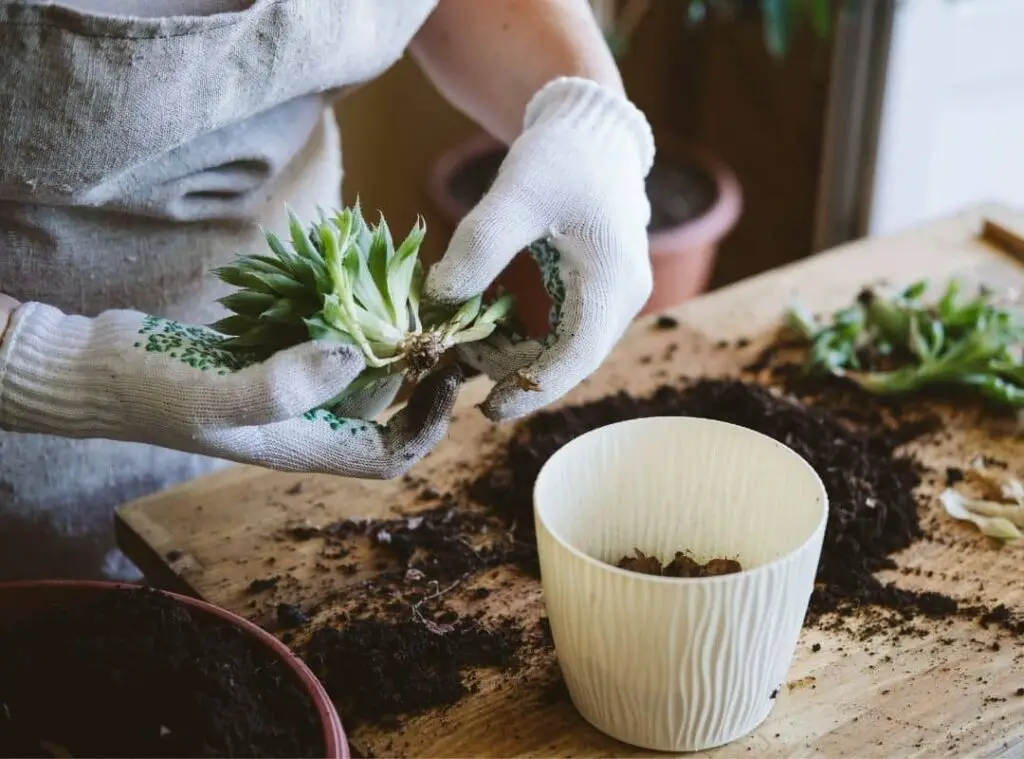
After propagation with honey
What is more important in terms of after care of these once you did the propagation is that you need to adhere to the precise misting process.
That will allow the leaves to emerge. However, you need to wait a little longer before you go ahead with potting them.
You need to be patient for some more time as it takes a little longer for the roots to develop vigorously and firmly. It will take few weeks’ time to develop the roots firmly.
Once you wait until the roots develop firmly, it could have a high potential of giving you back a flourishing plant.
As such, when you are sure that roots have firmly made and developed well, you could take off the leaf which you used for propagation.
After that you could grow the new growth in an appropriate pot along with a succulent mix.
Last but not least, when you locate this make sure that you keep it somewhere in a shady area and gradually you could start to acclimate to the sunlight.
Keep practicing a proper watering method and they will grow to their fullest.
Benefits of using honey in propagation
Honey is quite beneficial when it comes to propagation. Most importantly it works as a natural rooting hormone.
Honey itself is an organic stimulant that is perfect for succulent propagation. Having said that, you should refrain from using honey wherever it is available.
Instead, you may use raw honey. If you use other products of honey, they could mostly be made with added sugar and if it is pasteurized, they will not contain the same nutrients as raw honey does.
As such there will be no use of utilizing them for this propagation.
Above all, honey acts as a natural antiseptic and anti-fungal element which attributes the fungus and bacteria to not to invade the plants.
As such there will be no pest infections happening during this process. Moreover, it has a high potential of forming roots.
It is a somewhat slower process. However, it would be a fantastic option for synthetic hormones.
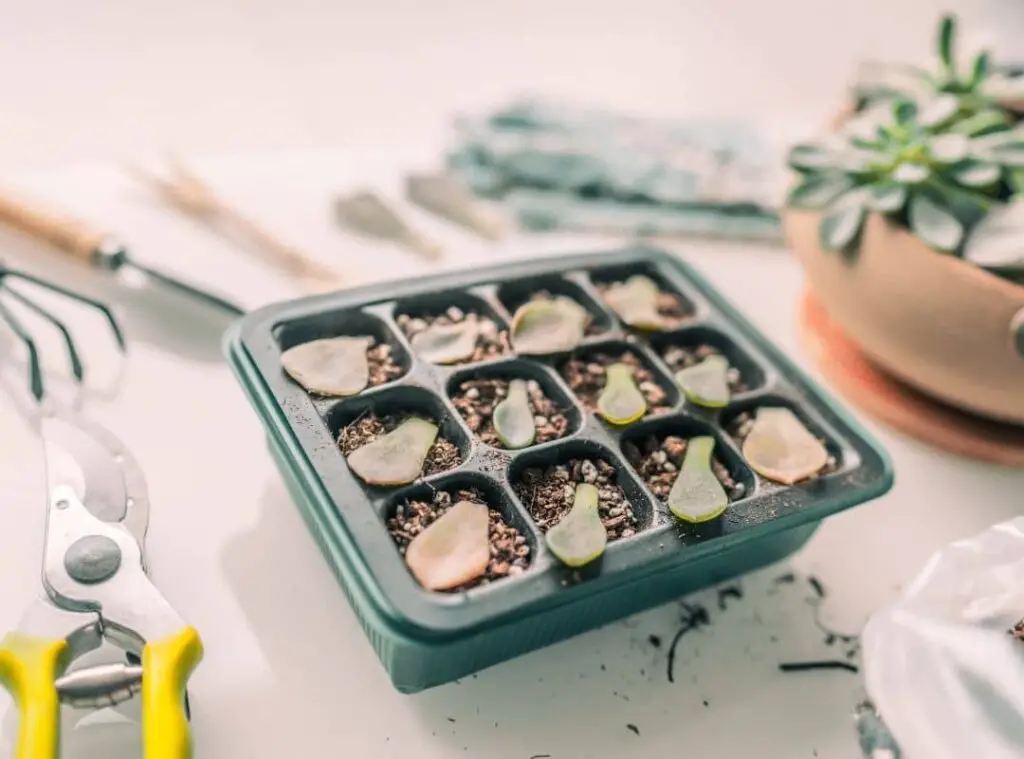
Can any succulent propagate using honey?
Find below a list of succulents which you could use honey for propagation.
Jade Plants
Jade plants are versatile plants which you grow both indoors and even outdoors. They could last for a longer time. Jade plants consist of chubby woody stems.
Their leaves would be oval shaped. They resemble a miniature tree which is why a lot of people tend to have one of them in their indoor garden collection.
Jade plants prefer to grow in heated temperatures, and they cannot withstand the drought conditions for a longer period when compared to the rest of the succulents.
You need to water them on a consistent basis on a moderate level. They cannot thrive in colder temperatures.
You could use either stem cutting or the leaf cutting method to propagate them.
When you do this, you need to keep the leaf cuttings or the stem cuttings for a few days until it becomes callus.
When it is in callus condition, you could plant them in soil while utilizing honey which will act as a natural rooting hormone.
Echeveria
Echeveria is quite a famous and a common succulent type among the gardeners due to its rosette formed leaves.
They are known as slow growing succulents. You could find about 150 varieties or even more of echeveria plants. They could make plenty of offshoots as well as baby plants.
They would prefer to grow in full sunlight and in well-draining soil just like other succulents.
The biggest concern we would have growing is their root rots as they are quite responsive towards soggy and damp conditions in the soil.
The Echeveria plant is a popular plant which could use the leaf method for the propagation process.
You only need to place the leaf cuttings on the soil surface. However, you need to ensure that you let the cutting become callus for a couple of days and after that only you could just simply lay them on the soil.
It will take some time to form roots and you could usually spot them at the base of the leaves. As the time passes, the older leaf will tend to wither.
Kalanchoe
Kalanchoe plants are quite renowned plants for their attractive blooms. Widow’s thrill is another common name which you could use to call them.
You need to ideally locate them in a bright shady place. In addition to that, you should water them as appropriate.
In terms of propagating these plants, you could use seeds, stem cutting and even leaf cuttings as well.
However, out of all these, many people prefer to try the stem cutting mostly to propagate these plants.
To do this, you need to first take a cutting which is about 5 inches in length. Remove the leaves at the base of the stem and keep it for a couple of days to dry out.
Once it is entirely dry, you could plant it in a pot where you have added a well-draining soil mix.
Before you plant, you could use honey to stimulate the root development as it works as a natural rooting hormone.
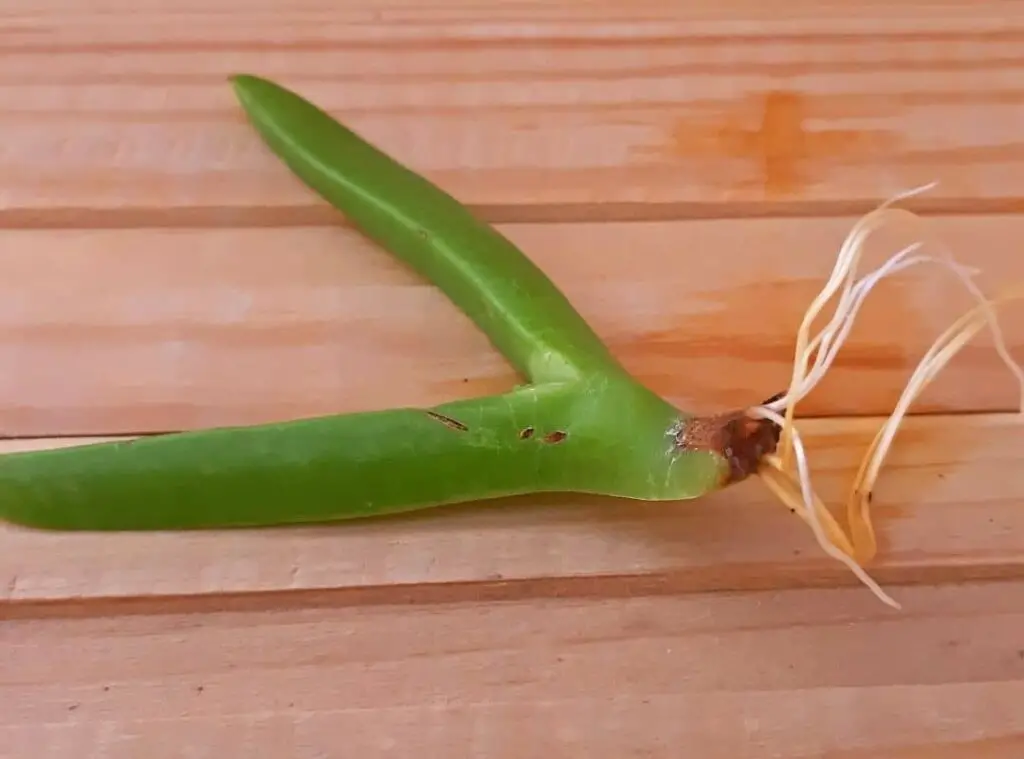
Sedum
Sedum is one of the widely spread succulent species. They usually come up with leaves and with stems which are chubby and fleshy.
Chances are that they could bloom with star shaped flowers. Stonecrops is another common name for Sedum.
They could be great picks for rock gardens. You could apply both leaf cutting and stem cuttings to propagate them.
In addition to that, you could use the seeds of sedum to make new plants of them.
However, more than seeds, the most popular methods of propagating these are by stem cuttings and by leaf cuttings.
First you need to trim a leaf which is healthy enough and leave it somewhere until the cuttings dry out for a couple of days.
After that, you could plant them in a well draining potting mix. Prior to doing this, you could apply honey on the cuttings as it will stimulate root development of the cuttings.
It will take about two to three weeks to form roots. You could follow the same steps for stem cuttings as well.
Sedum Rubrotinctum, Pork and Beans
Pork and beans are another common name which you could use to call Sedum Rubrotinctum. They comprise leaves which resemble jelly beans, and they are green.
However, once you expose them for adequate sunlight, chances are that you could spot them with red margins of the leaves.
They produce yellow flowers, and they are usually star shaped. They are so gentle to the touch, and they could shed their leaves so easily.
You could use stem cuttings and leaf cuttings to propagate them and make sure you let them become callous for a couple of days first just like you do with other succulents before planting.
When you release the cuttings entirely dry, you could apply honey on those edges which will act as a natural rooting hormone. After that you could place them in a soil mix which has good drainage.
Crown of thorns plant
This is a well known indoor growing plant. It is an exceptional plant as they could come up with blooms right throughout in a year given the proper care treatment which it expects.
You may use seeds, stem cutting or even leaf cuttings to propagate them. Having said that, if you use seeds, you cannot always rely on the results of germination.
Fist take a cutting from a healthy plant. When you do this, ensure that you take the cuttings towards the base of the plant.
After that place, those cuttings will become callus for a couple of days. After that, dip the cut edges in honey and later place them in the potting soil.
After like 14 weeks’ time, you could see how they sprout. After that, you could place them in pots.
Can we use synthetic honey for propagation?
Best method of using honey would be as a natural rooting hormone. You could find many other synthetic rooting hormones that come in liquids, powders and as gels.
However, if you are someone who is particularly into organic gardening, you should use honey as a natural rooting hormone.
Read Next: Pencil Cactus Propagation Guide | 4 Effective Way To Propagate
